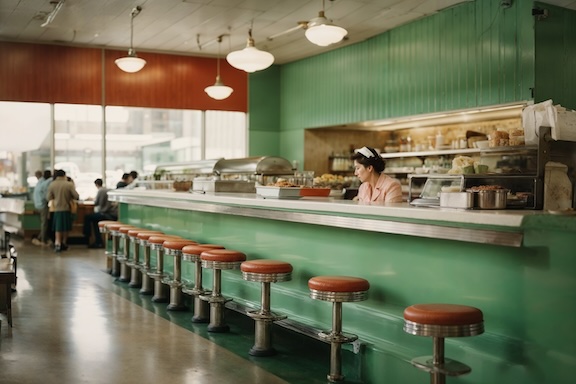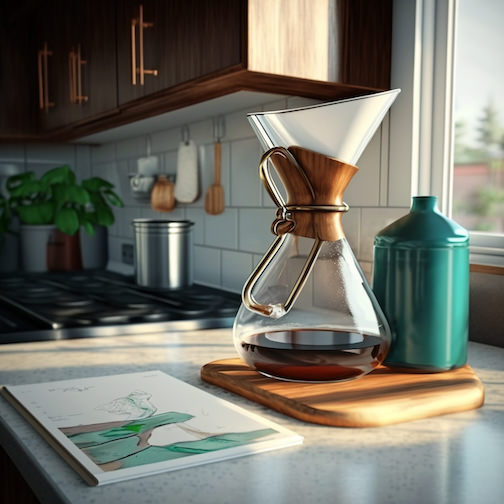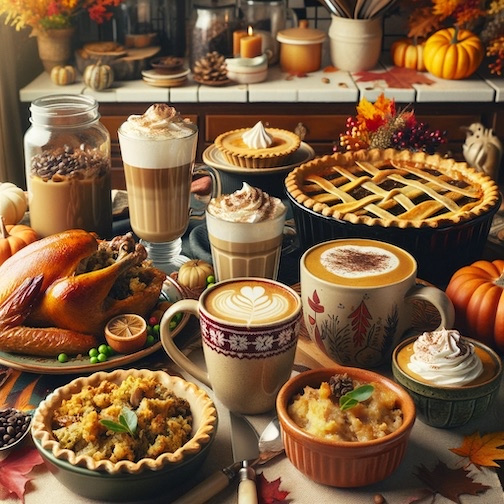When the summer heat hits, as a kid, mom made us cool aide popsicles. Home made was less sticky and thus less times we got in trouble over the store bought versions. Remembering that nothing is more refreshing than a frozen treat on a very hot summer day, could I rethink the cool aide part?
My thinking is that coffee popsicles are the perfect way to enjoy my favorite drink while keeping cool. Easy to make and customizable, the popsicles could be tailored to suit any coffee lover’s taste. Here’s a guide to making delicious coffee popsicles at home, with some exciting flavor enhancement options I found both online and at a recent visit to the bookstore.
Basic Coffee Popsicle Recipe (ice cubes would be fun too)
Ingredients:
- 2 cups of brewed coffee (cooled to room temperature)
- 1 cup of milk (dairy or plant-based)
- 1/4 cup of sugar or sweetener of your choice
- 1 teaspoon of vanilla extract
Mix and freeze:
- Brew your favorite coffee and let it cool to room temperature.
- In a bowl, combine the coffee, milk, sugar, and vanilla extract. Stir until the sugar is fully dissolved.
- Pour the mixture into popsicle molds, leaving a little space at the top for expansion. There is classic and fun shape options available these days. Perhaps I need to explore more to make them a fun treat with friends.
- Insert popsicle sticks and freeze for at least 4-6 hours, or until solid.
Flavor ‘Enhancer’ Options
A few flavor options I’m trying, so far they are tasking as I expected but I assume some will look and sound better than they taste due to how frozen liquids can change them a bit.
1. Mocha Popsicles:
- Add 2 tablespoons of cocoa powder to the basic mixture.
- Swirl in some chocolate syrup before freezing for an extra chocolaty touch.
- My test of this one, I added the chocolate to milk for what I thought would be more of a mocha ice cream effect. It didn’t freeze evenly, I may try playing more with the percents of milk/chocolate.
2. Caramel Macchiato Popsicles:
- Drizzle caramel sauce into the molds before adding the mixture.
- Add a teaspoon of caramel extract to the base recipe.
- I highly recommend this one!
3. Vanilla Latte Popsicles:
- Increase the vanilla extract to 2 teaspoons.
- Add a splash of vanilla syrup to the coffee mixture.
4. Coconut Coffee Popsicles:
- Substitute regular milk with coconut milk.
- Add 1/2 teaspoon of coconut extract for a tropical twist.
- I’m not a fan of coconut milk but family members like it. I was going to also try coconut water.
5. Hazelnut Coffee Popsicles:
- Add 2 tablespoons of hazelnut syrup or hazelnut-flavored coffee creamer to the mixture.
- Top with crushed hazelnuts before freezing.
Layered Popsicles – More work, great to share at a party!
1. Coffee and Cream Layers:
- Prepare the basic coffee mixture and a separate mixture with just milk and sweetener.
- Alternate layers of coffee and milk mixtures in the molds, freezing each layer for about 30 minutes before adding the next.
- This worked better than my attempt up above with just adding milk and chocolate to the coffee mixture.
2. Coffee and Chocolate Layers:
- Alternate layers of coffee mixture and chocolate milk.
- For a marble effect, gently swirl the layers with a stick before freezing.
3. Coffee and Fruit Layers:
- Add a layer of blended fruit puree (like strawberries, raspberries, or mango) between the coffee layers.
- This adds a fruity burst of flavor and a beautiful visual contrast.
- First attempt resulted in things that are best not mixed with coffee, I’m still working on the right fruit puree mixture.
A Few Tips
- Adjust the sweetness to your liking. Remember that cold treats tend to taste less sweet, so you might want to add a bit more sugar or sweetener.
- Consider simply adding mix-ins like chocolate chips, crushed nuts, or even a bit of coconut flakes for added texture.
- For an adult twist, you can add a splash of coffee liqueur like Kahlua to the mixture.
Coffee popsicles are a fun and refreshing way to enjoy a coffee during the summer. With just the few flavor possibilities and simple ingredients I outlined, it is pretty easily to create a variety of delicious frozen treats to keep cool. After a bunch of trying things, I am remembering as a child I was told, “these are ice, they don’t travel well” when I asked about taking a popsicles in the car.
Please note that if you purchase from clicking on the link, some will result in my getting a tiny bit of that sale to help keep this site going. If you enjoy my work, perhaps you would consider donating to my daily cup of coffee, thank you.





